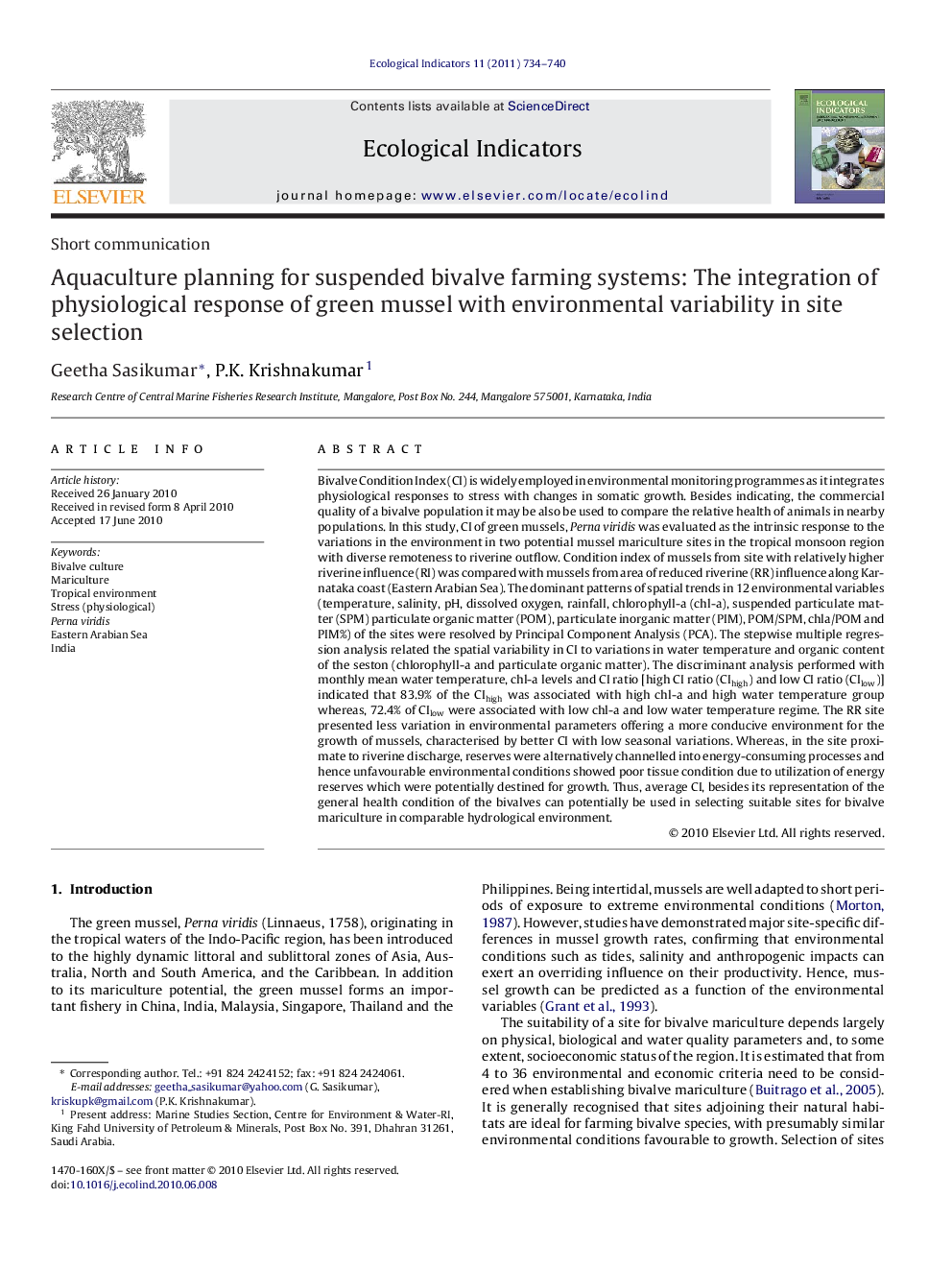| Article ID | Journal | Published Year | Pages | File Type |
|---|---|---|---|---|
| 4374152 | Ecological Indicators | 2011 | 7 Pages |
Bivalve Condition Index (CI) is widely employed in environmental monitoring programmes as it integrates physiological responses to stress with changes in somatic growth. Besides indicating, the commercial quality of a bivalve population it may be also be used to compare the relative health of animals in nearby populations. In this study, CI of green mussels, Perna viridis was evaluated as the intrinsic response to the variations in the environment in two potential mussel mariculture sites in the tropical monsoon region with diverse remoteness to riverine outflow. Condition index of mussels from site with relatively higher riverine influence (RI) was compared with mussels from area of reduced riverine (RR) influence along Karnataka coast (Eastern Arabian Sea). The dominant patterns of spatial trends in 12 environmental variables (temperature, salinity, pH, dissolved oxygen, rainfall, chlorophyll-a (chl-a), suspended particulate matter (SPM) particulate organic matter (POM), particulate inorganic matter (PIM), POM/SPM, chla/POM and PIM%) of the sites were resolved by Principal Component Analysis (PCA). The stepwise multiple regression analysis related the spatial variability in CI to variations in water temperature and organic content of the seston (chlorophyll-a and particulate organic matter). The discriminant analysis performed with monthly mean water temperature, chl-a levels and CI ratio [high CI ratio (CIhigh) and low CI ratio (CIlow)] indicated that 83.9% of the CIhigh was associated with high chl-a and high water temperature group whereas, 72.4% of CIlow were associated with low chl-a and low water temperature regime. The RR site presented less variation in environmental parameters offering a more conducive environment for the growth of mussels, characterised by better CI with low seasonal variations. Whereas, in the site proximate to riverine discharge, reserves were alternatively channelled into energy-consuming processes and hence unfavourable environmental conditions showed poor tissue condition due to utilization of energy reserves which were potentially destined for growth. Thus, average CI, besides its representation of the general health condition of the bivalves can potentially be used in selecting suitable sites for bivalve mariculture in comparable hydrological environment.
